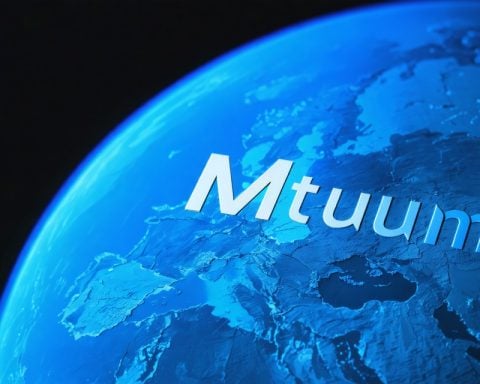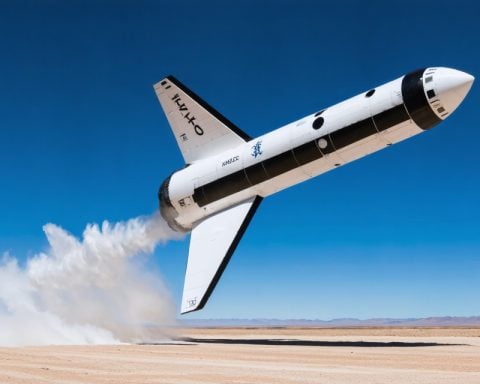- ISRO celebrated its 100th mission with the launch of the NVS-02 satellite on January 29.
- A technical malfunction has left the satellite in an elliptical Geosynchronous Transfer Orbit instead of its desired position.
- The satellite’s Liquid Apogee Motor is inactive due to a failure in the critical valves needed for orbit adjustment.
- ISRO is evaluating alternative strategies to utilize the satellite within its current orbit.
- NVS-02 plays a crucial role in India’s NavIC system, providing essential Position, Velocity, and Timing services.
- ISRO’s team is diligently working to resolve the issue, with significant implications for India’s satellite navigation ambitions.
On January 29, as the Indian Space Research Organisation (ISRO) celebrated its 100th successful mission with the launch of the NVS-02 navigation satellite, the excitement quickly turned to concern. A significant technical glitch involving a malfunctioning valve has halted the satellite’s journey to its intended operational orbit. Instead of making a smooth transition to its designated position, the satellite is currently trapped in an elliptical Geosynchronous Transfer Orbit (GTO).
Despite successfully deploying solar panels and establishing communication, the satellite’s Liquid Apogee Motor (LAM) remains inactive. The critical valves designed to admit oxidizer for thruster ignition have failed to open. While other systems of the satellite are functioning well, without this essential maneuver, orbit correction is impossible.
ISRO is actively exploring alternative strategies to utilize the satellite’s capabilities from its existing orbit. Options are being weighed, given that the NVS-02 is integral to India’s Navigation with Indian Constellation (NavIC) system, providing vital Position, Velocity, and Timing (PVT) services across the region.
The challenge lies ahead as ISRO’s dedicated team works tirelessly to resolve this issue. With the future of the NVS-02 hanging in the balance, the space agency’s innovative prowess will be put to the test. As India’s aspirations for a self-reliant satellite navigation system face this hurdle, all eyes are on ISRO for a breakthrough. Stay tuned for updates on this unfolding space saga!
ISRO’s NVS-02: Challenge or Opportunity? Discover the Latest Developments!
Recent Developments in the NVS-02 Mission
On January 29, 2023, the Indian Space Research Organisation (ISRO) marked a significant milestone with its 100th successful mission by launching the NVS-02 navigation satellite. However, this achievement was overshadowed by a serious technical setback: a malfunctioning valve has prevented the satellite from reaching its intended operational orbit. The NVS-02 is currently stranded in an elliptical Geosynchronous Transfer Orbit (GTO), highlighting potential challenges ahead.
Technical Glitch Overview
The failure of the critical valves that admit oxidizer for the satellite’s Liquid Apogee Motor (LAM) has halted any plans for orbit correction. Although the satellite has successfully deployed its solar panels and established communication, the inactive LAM is a significant impediment to its operational functionality. This situation raises questions about contingency measures and alternative strategies ISRO might deploy.
Active Measures and Potential Alternatives
ISRO is exploring various options to utilize NVS-02’s capabilities from its current orbit. This satellite is a crucial component of India’s Navigation with Indian Constellation (NavIC) system, essential for providing Position, Velocity, and Timing (PVT) services. Efforts to leverage the satellite’s capabilities despite its orbital challenges could include:
– Interim Data Services: Providing limited PVT services from GTO rather than the intended geostationary orbit.
– Future Upgrades: Investigating possibilities for future missions to enhance or replace the satellite based on its current status.
– Engineering Innovations: Utilizing the experience gained from this challenge to innovate and improve subsequent satellite designs.
Frequently Asked Questions
Q1: What is NavIC and why is NVS-02 important?
A1: The Navigation with Indian Constellation (NavIC) is an autonomous satellite navigation system developed by ISRO. NVS-02 plays a pivotal role in providing accurate positioning services to users in India and surrounding regions, vital for both civilian and military applications.
Q2: What options are available if NVS-02 cannot reach its intended orbit?
A2: If NVS-02 cannot complete its maneuver to the operational orbit, ISRO may seek to maximize the satellite’s functionalities from GTO, potentially offering partial navigation services until a future satellite can be deployed.
Q3: What lessons can be learned from this incident for future satellite missions?
A3: This incident highlights the importance of robust engineering designs, thorough testing protocols, and contingency planning. ISRO can apply these lessons to enhance the reliability of future satellite missions and to refine its troubleshooting processes.
Conclusion
As the engineering team at ISRO strives to address the LAM issue, the future of NVS-02 presents an opportunity for innovation and resilience in the face of setbacks. The space community and the nation watch intently as ISRO aims for a breakthrough in its navigation satellite endeavors.
For further details about ISRO and its missions, visit ISRO.








